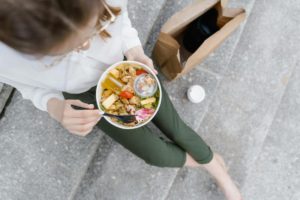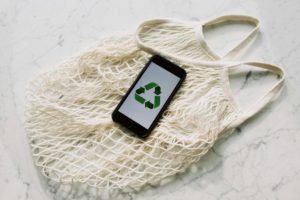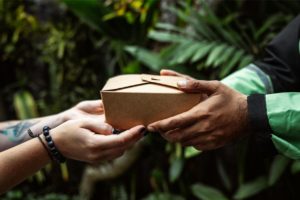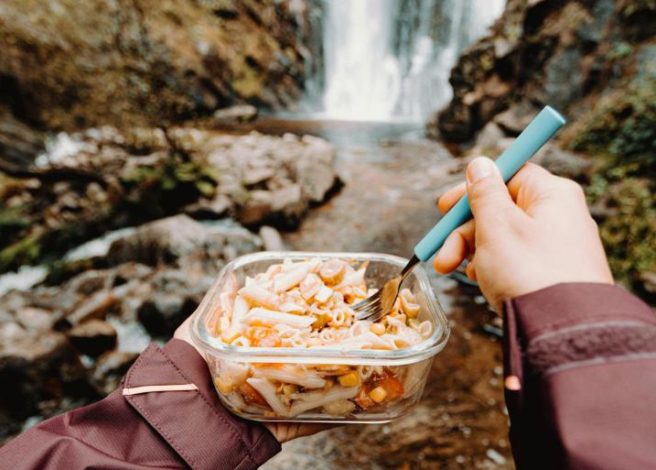At a Glance
- Environmental sustainability relies on smart packaging design, focusing on lightweight materials, recyclability, and lifecycle impact.
- Lightweight plastics reduce transport emissions, outperforming heavier options like glass or metal.
- Designing for recyclability — using mono-materials and clear labeling — boosts circularity and consumer participation.
- Full lifecycle thinking guides better choices: balancing resource use, end-of-life options, and food waste reduction.
If you’re running a food business and haven’t jumped on the environmental sustainability train yet, you might be leaving more than just a carbon footprint: you’re leaving money on the table. Environmental sustainability is as essential to your business as food safety and healthy profits. Your rivals are adapting to stricter environmental laws and changing consumer demands. Clinging to outdated practices is not just bad for the planet; it’s a recipe for business failure.
Do customers ask you about your sustainability initiatives? It’s a common talking point now. It’s crucial that you stay informed to keep your business thriving and your customers smiling.
This week, we sat down with Conor Carlin, President of Clefs Advisory LLC. Operating at the nexus of packaging and sustainability, Conor served as President of the Society of Plastics Engineers (2024) and is a former General Manager for ILLIG in North America. His expertise spans materials, packaging technologies, policy, commercial strategy, and market intelligence.
Is packaging really the bad guy as we work toward more eco-friendly business practices? Is there a silver lining? It’s time to find out.
What is Environmental Sustainability?
 At its core, sustainability means using resources in a way that allows them to be replenished. It’s not about being “more sustainable” or “less sustainable” — something either is sustainable or it isn’t. What we can measure is whether something has a higher or lower environmental impact.
At its core, sustainability means using resources in a way that allows them to be replenished. It’s not about being “more sustainable” or “less sustainable” — something either is sustainable or it isn’t. What we can measure is whether something has a higher or lower environmental impact.
In the food industry, sustainability covers everything from packaging choices, waste management, energy use, and recycling practices. It’s about ensuring that our current operations don’t compromise the ability of future generations to meet their own needs.
The modern food industry has evolved dramatically to meet consumer needs for convenience, leading to innovations in food packaging but also creating environmental challenges.
The Evolution of Consumer Behavior and Its Environmental Impact
Before the advent of advanced food packaging, grocery stores operated quite differently. Goods were often stored behind counters. Customers would request items from store clerks, who would retrieve them.
The idea of self-service grocery stores, where customers pick items from the shelves, only became popular after the first Piggly Wiggly opened in 1916.
The modern food industry has changed a lot to meet new consumer needs for convenience. This has led to great innovations in food packaging and delivery. But, it has also created serious environmental challenges. It wasn’t long before other key developments also had major impacts.
The Convenience Revolution
Today’s consumers lead increasingly busy lives, resulting in a fundamental shift in how they interact with food. What was once a daily trip to local markets for fresh ingredients has transformed into weekly bulk shopping trips and on-demand food delivery. This shift has increased packaging needs and, consequently, more waste production. 
Food waste in the U.S. is about 40% across the supply chain. It’s not just about the food; it also includes production, packaging, and transportation resources.
Determining Sustainability
When establishing if a practice is environmentally sustainable, it’s important to look at two key factors: carbon footprints and life cycle assessments.
Carbon Footprints & Life Cycle Assessments
A carbon footprint describes the total amount of greenhouse gases (GHGs) generated as part of an economic activity. The primary GHGs are carbon dioxide, methane, and nitrous oxide, with carbon dioxide used as the baseline for measurements and comparison.
A carbon footprint is measured in CO₂ equivalents (CO₂e) per kg through Life Cycle Assessments (LCAs). Life Cycle Assessment, developed in the 1990s, measures a product’s total environmental impact from creation to disposal. This helps companies reduce waste and energy use. Despite its benefits, LCA adoption has been slow due to its complexity and time requirements.
Companies conduct LCAs to minimize environmental damage, conserve resources, improve efficiency, and enhance their public image. Recently, more organizations use LCAs to meet sustainability regulations and consumer demands.
Specialist firms like Quantis and Sphera conduct these assessments using databases from Ecoinvent, GaBi, or the Federal LCA Commons. A typical packaging LCA costs $30,000-$45,000 and takes 3-6 months to complete.
The Role of Packaging in Environmental Sustainability
Packaging is important for preserving and delivering food. But it poses a major environmental challenge at the end of its useful life. Business owners must navigate complex decisions about packaging materials, considering factors such as:
- Product protection, presentation, and shelf life
- Consumer convenience and expectations
- Environmental impact and disposal options
- Recycling capabilities and infrastructure
- Cost-effectiveness and scalability
Comparing Packaging Materials
Different packaging materials have vastly different environmental footprints:
- Plastics: The carbon footprint of plastic varies by polymer type. For fossil-based plastics (PET, PP, PS, PE), the majority of the impact comes from initial polymer production. Despite common misconceptions, studies show that replacing plastic packaging with alternative materials would often result in approximately four times the environmental impact in terms of CO₂ equivalent emissions, primarily due to weight differences and production requirements.
- Bio-based plastics: Materials like PLA, PHA, and PEF derive their impact primarily from agricultural factors such as land use, fertilizers, and water consumption. While sometimes presented as more environmentally friendly, they don’t always outperform traditional plastics in LCAs due to energy-intensive processing.
- Glass, metal, and paper: While these materials may have advantages in recycling infrastructure, they typically require more energy to produce and transport due to their weight, resulting in higher carbon footprints compared to plastic alternatives for many applications.
The Recycling Challenge
One of the most significant complications in environmental sustainability is effective recycling. Many consumers and businesses want to join recycling programs, but the system has some hiccups:
Volume and Participation
 Recycling systems require consistent volume to operate effectively. When consumers get mixed messages about recycling, they lose faith in it. As a result, participation and collection rates drop. This creates a self-fulfilling prophecy of inefficiency.
Recycling systems require consistent volume to operate effectively. When consumers get mixed messages about recycling, they lose faith in it. As a result, participation and collection rates drop. This creates a self-fulfilling prophecy of inefficiency.
Education, Infrastructure, and Standardization
Education is also needed regarding recycling. What materials need to be separated? What can go in a standard mixed bin? Are there items that can just end up in landfill?
Different regions and facilities have varying recycling rules and capabilities. This leads to confusion and inefficiency. Some countries in Europe have high recycling rates. They achieved this through standardized, nationally regulated systems. However, similar systems face challenges in larger, diverse markets like the U.S. where we have over 9,000 “recycling programs” — systems that are set up in your home, school, or office to effectively manage waste correctly.
Practical Steps for Food Business Owners
As a food business owner, there are several ways to take steps toward environmental sustainability:
- Evaluate your packaging choices carefully, considering both immediate needs and long-term environmental impact.
- Educate your staff and customers about proper disposal and recycling practices.
- Consider portion sizes and packaging quantities to minimize food waste.
- Look for opportunities to source locally and reduce transportation-related environmental impacts.
Looking to the Future
Each day brings new environmental rules. Customers now care as much about your eco-practices as your specials. The future isn’t just about what’s in the package — it’s about the footprint that the container leaves behind.
Don’t consider your business as just another restaurant or food shop — it’s part of a bigger movement. Think of sustainability as your competitive edge. When customers know you’re actively reducing waste, choosing eco-friendly packaging, and sourcing locally, you’re not just selling food — you’re selling a better future. And that’s something customers are increasingly willing to pay for. 
Think of sustainability as a secret ingredient in your business recipe. It might take some experimenting to get it right, but once you do, it will set you apart. Your customers aren’t just looking for “good food” anymore; they’re hungry for businesses that share their values. By sharing your story of reducing waste, using eco-friendly packaging, and sourcing locally, you sell more than a meal. You’re serving up trust, transparency, and a taste of a better future.
Your best solution matters most to Inline Plastics — even if that means recommending options outside our services. Reach out anytime with questions. We’re here to guide you.
Would you like to know more about Conor Carlin and his work at Clefs Advisory LLC? Connect with him on LinkedIn today.

